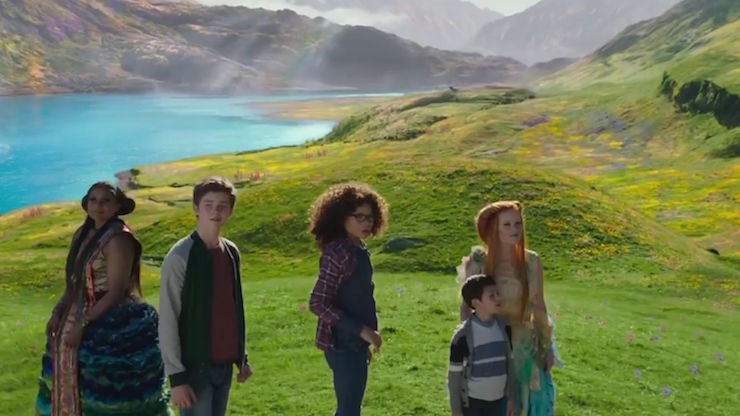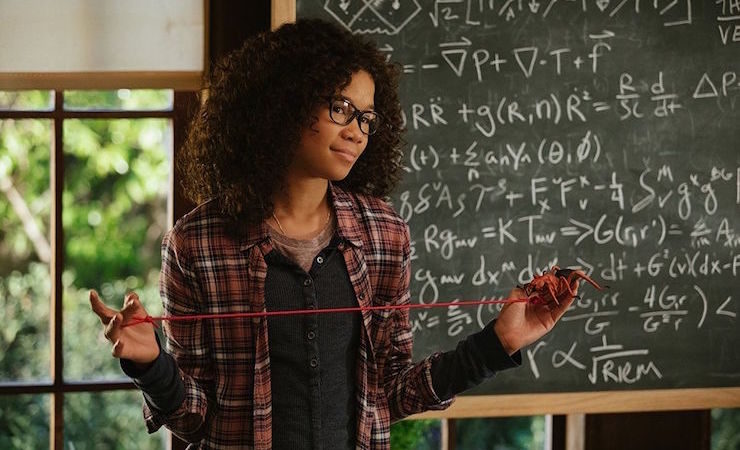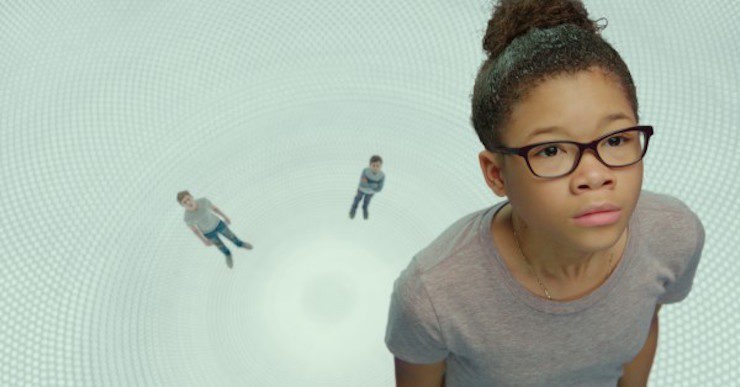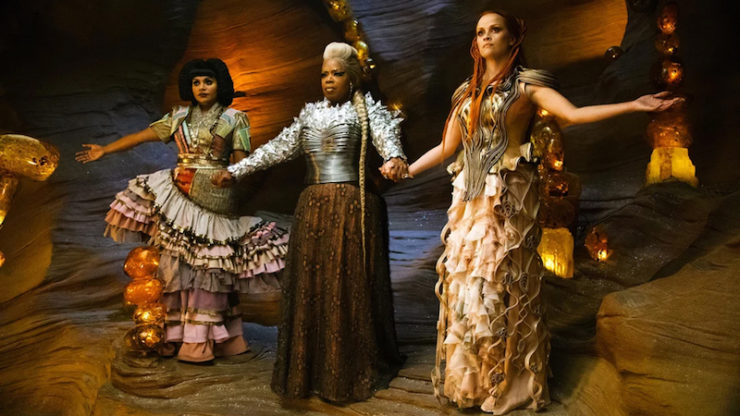If I could take all the beloved fantasy films of my childhood and coat them in glitter and light, A Wrinkle in Time would be sitting in front of me, winking. While diehard book advocates may find themselves bothered by the changes made in this adaptation, it is a gorgeous journey that deserves the taking with a cast that literally glows in every frame.
A Wrinkle in Time manages quite a feat in taking a beloved book over half a century old, and updating for today’s children in a way that manages to broaden the themes of the story and reflect the world we occupy more presently. While it does not replicate the visuals of the book down to each description, it does promote a different visual vernacular for fantasy films that will hopefully catch on the future. I would welcome Ava DuVernay to try her hand at Oz films next, as she is well-suited to working within a variety of landscapes that present different atmospheres and tones with each turn. There are a few strange cuts editing-wise that occasionally get in the way of the narrative, but outside of those hiccups, the film is delightful to look at from every angle.

The cast is effervescent all the way around, and Storm Reid’s turn as Meg grounds the film beautifully. She is a powerhouse of curiosity and emotion, brilliant and vulnerable by turns. and watching her navigate the film’s changing terrain fuels the phantasmagoria in all the places where it is most in danger of petering out. Deric McCabe is the picture of precociousness as Charles Wallace, and Levi Miller’s ever-adoring Calvin O’Keefe keeps the film riveted to Meg’s every move, if only due to his steadfast awe of her. (He seems to have escaped the shadow of Pan in one piece, so that’s also a plus.) Reese Witherspoon, Mindy Kaling, and Oprah Winfrey pull out every possible stop—and every shade of lipstick—as the three Mrs. Ws, and will hopefully be the inspiration for the future of cosplay at every convention unto the end of time. Winfrey in particular is such an effective guiding anchor that’s it’s hard to believe she hasn’t played more fantasy wise guides.
The story has been truncated severely in places, condensed and reworked in others, but if you don’t hang on to the original story too tightly, the alterations are often fascinating. Sometimes the changes are deep and resonant; seeing the way the IT creeps into our everyday lives, effecting people on Earth who Meg knows, shaping their cruelty and violence and anger, is chilling. Sometimes the changes are strangely fitting when they seem most out of place; watching Zach Galifianakis play the Happy Medium when the character was originally female in the book is also jarring, but oddly enjoyable at the same time. And then there are times when you can’t help but wish that the film would lean on its weirdness a little more—whenever it does, the action becomes more distinct and engaging, but then it is often brought back down to the ground with Big Epic Fantasy visuals and beats that we already know too well. Also, if you are here for worldbuilding galore, this is emphatically not where it’s at; there are a few points that are carefully explained, but the film largely forgoes long expository moments.

If there is one theme from the book that could have used some drawing out in the film, it’s really the question of conformity versus individuality as it is presented on Camazotz and within the Murry family. There isn’t a clear sense of the politics or power structure on Camazotz, which makes the realm seem more big-time evil with a capital ‘E’ than the result of specific oppression by the IT. (An early draft of the novel makes it clear that Camazotz could be the logical endpoint for either a totalitarian state or a corrupt democracy.) Equating conformity with fear, anger, and suffering seems an even more potent theme to lean on today, but it remains thin on the ground in the film.
The only place where that theme does come through loud and clear is in Meg’s desire to change, and her subsequent acceptance of self. The film takes her difficulty with traveling by tesser as a place where the narrative can pause and acknowledge that Meg—like many teenagers, and especially one handling the trauma she has lived through with the loss of her father—might wish she could be a completely different person, one more “acceptable” to her peers and teachers. As the story unfolds, she finds that who she is, faults and all, is infinitely worthy of love. This acceptance allows her to tesser for herself, a radical expression of self-fulfillment that is sure to empower young women everywhere.
The greatest weakness of A Wrinkle in Time is its running time. While Disney clearly had this in mind as a children’s film that would be easy for little ones to sit through, asking the cut to come in under two hours really breaks the story off where it should be flourishing. Some of the cuts are clear—there are scenes from the trailer that did not make it into the film—but some of them are strange gaps in the narrative that leave one with a sense of loss. This could have easily been a three-hour-long LOTR style epic, and it honestly deserved the treatment. Perhaps there is a longer theatrical cut somewhere, waiting to be unleashed on the world.

But it doesn’t change the fact that the film belongs alongside the strange 80s fantasies that made up so many childhoods. A Wrinkle in Time belongs on shelves next to Neverending Story and Labyrinth. It delivers all the same magic and oddness, all the beauty and synthesis. It is a wild ride dipped in rainbow sherbet, and for that, I can only be grateful.
Emmet Asher-Perrin would also like to thank Chris Pine’s beard and his sweater for the time they put into this. You can bug her on Twitter and Tumblr, and read more of her work here and elsewhere.










